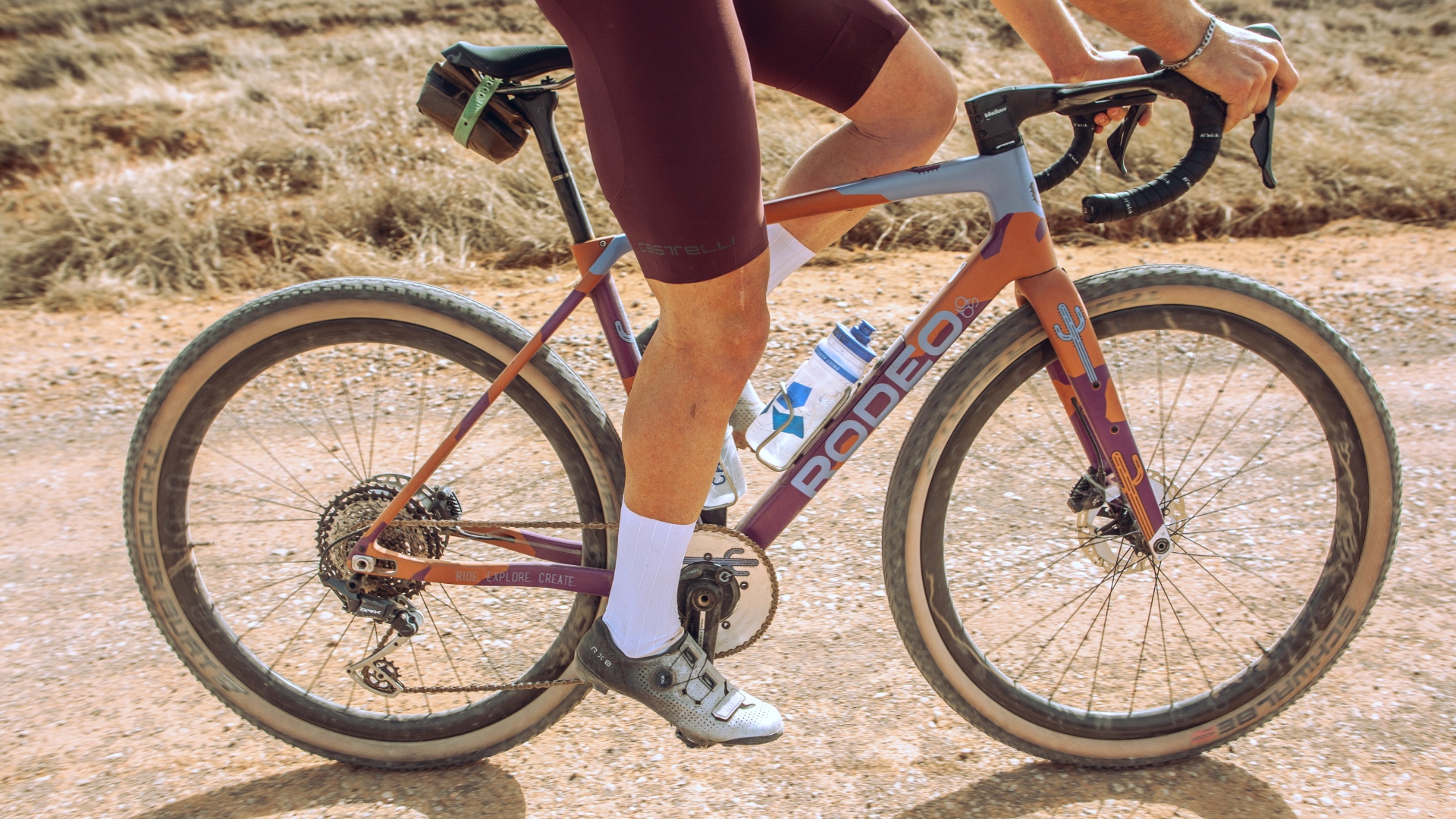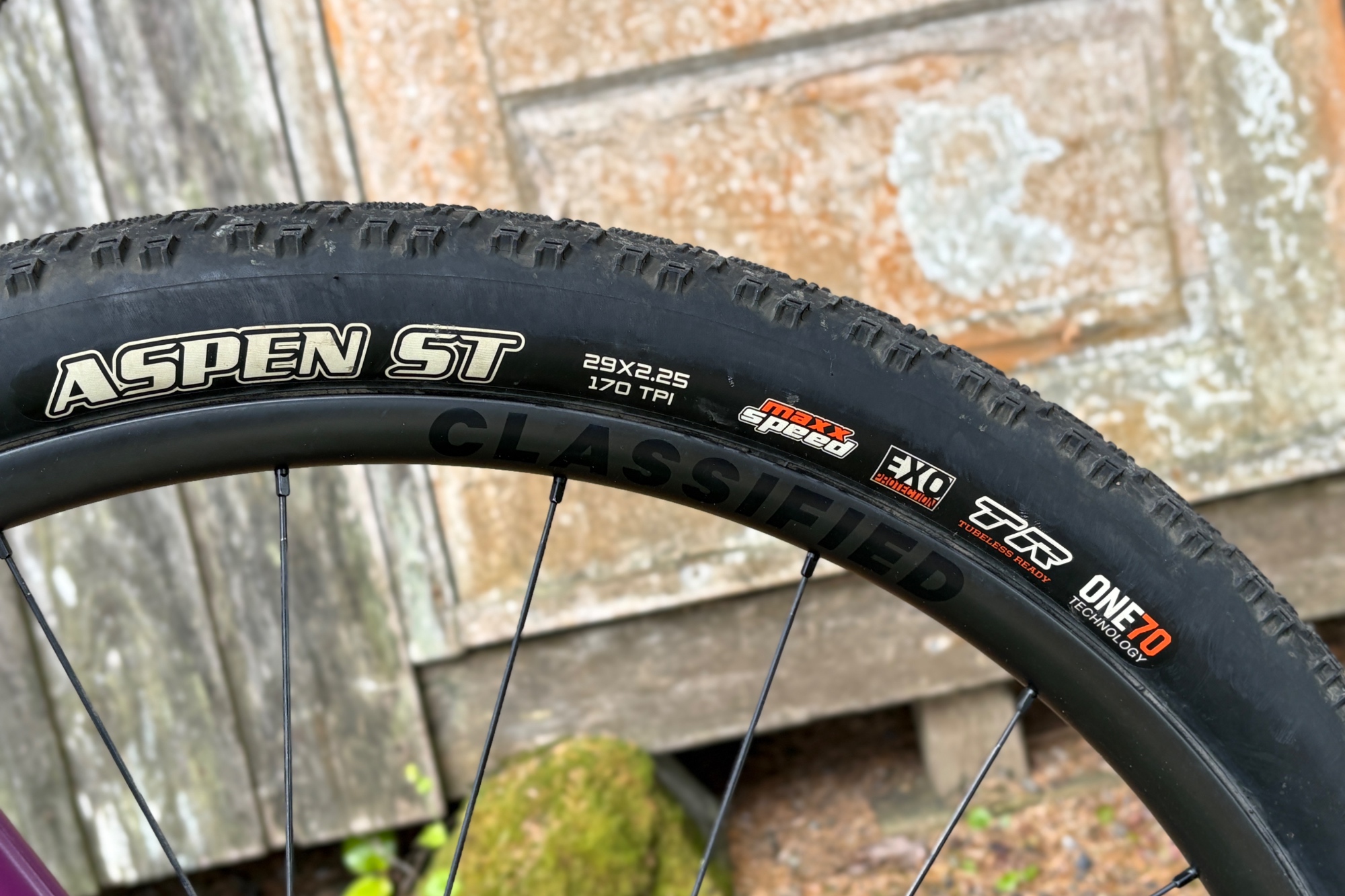It started as an experiment: Is the 2.25-inch tyre trend for gravel bikes really a good idea?
It was August 2024, and all eyes were on the Leadville 100, where drop-bar mountain bikes were being rolled out of bike shops as the gravel pros searched for every possible advantage. This burgeoning trend, built on innovations seen earlier in the year at the 200-mile Unbound Gravel race, where the likes of Dylan Johnson, Keegan Swenson, and Payson McElveen popularised the use of 2-inch tyres (or 50mm in non-MTB speak) on gravel rigs.
I had used fat tyres on my gravel bike once before – in 2023 on one big, dumb ride in the Colorado mountains – but that had been purely about capability, not speed or racing. It was the kind of ride that paired pavement with extra chunky gravel, and neither a mountain bike nor a gravel bike was quite the right tool for the job.
At the time, the assumption was that tyres like that were only good for the chunky stuff and slower at everything else. But in August of 2024, that notion started to get challenged. And now, in 2025, there is tangible evidence that the best tyres for any gravel might just be those big fat mountain bike tyres – as long as your bike can fit them.
- Whether or not it is objectively faster matters less than the fact that they’re simply more fun
- There is huge variability in the 2.25-inch tyre market, and comparisons are difficult, yet the differences between the tyre models are obvious.
- With a new tyre segment (MTB tyres for gravel) emerging, it was time to take stock and compile a tyre guide featuring the best options currently available on the market. You can read that guide here.
Why MTB tyres might be better at gravel than gravel tyres
Dylan Johnson is a big proponent of running MTB tyres in gravel races
(Image credit: Taylor Chase / Life Time Grand Prix)
The rise of mountain bike tyres in gravel racing has largely been driven by the pursuit of speed at North America’s biggest events. Years of high-level competition on punishing courses have reinforced a key lesson: managing suspension losses is critical to maintaining speed. On rigid, drop-bar gravel bikes, the most effective way to do this is by increasing tyre volume while reducing tyre pressure.
This approach not only lowers the risk of tyre punctures, but also dampens vibrations from rough, uneven terrain and significantly reduces rolling resistance. Sure, suspension forks and in-frame suspension (think: Specialized’s Futureshock) can achieve similar results, but tyres offer a simpler, more tunable and widely accessible upgrade.
One of the people pushing this conversation forward with actual data is John Karrasch, a bike fitter and emerging tyre expert from Alabama. Using the Chung method, Karrasch has systematically tested a wide range of tyres, from 34mm to 60mm, across surfaces from pavement to B-roads, creating one of the most comprehensive datasets on off-road tyre efficiency.
The Chung Chung Method, also known as Virtual Elevation Testing, is a real-world field-testing approach that estimates rolling resistance without relying on a drum. Proponents of this method argue that it provides more accurate terrain-specific results that better reflect how tyres perform on uneven, unpredictable terrain.
The basic premise of the Chung Method is to ride a short, stop-free course several times at various power outputs and on a day without wind. By repeating this test with different tyres, one can isolate the true coefficient of rolling resistance of each tyre on the given surface.
His findings aren’t universal, but they support two broad conclusions:
- Modern cross-country mountain bike tyres generally outperform lower-volume gravel tyres once terrain reaches moderate roughness.
- Within the high-volume category, speed varies enormously between models.
That variance exists in part because the 2.2-inch segment is flush with race-oriented options. Short-track XC racing has created a deep pool of tread patterns, casings and rubber compounds, meaning there are more race-ready 2.2-inch tyres than 50 mm gravel tyres, even though more gravel bikes can fit the latter than the former.
This imbalance highlights a gap: aerodynamically, 6mm of tyre width can matter, yet clearance and availability keep MTB widths in their own category. Manufacturers are closing that gap, but progress takes time.
When is it not a good idea to run MTB tyres?

(Image credit: Logan Jones-Wilkins)
Before you start tossing out your gravel tyres, it’s worth noting that MTB tyres aren’t the universal answer. Not every rider, bike, or terrain benefits from a full switch. In fact, the emerging 48mm–2.1” category is starting to hit a sweet spot, offering tyres that bridge the gap between fast-rolling gravel setups and burlier MTB options.
The 48mm Enve Hex and 50mm Specialized Terra are two good options I have been riding periodically this summer, particularly on mixed routes where the balance tips toward pavement but still includes some gravel.
Of course, clearance is a big limiting factor. Many gravel (suspension) forks aren’t built for true MTB-sized rubber, with most capping out around 50mm. But I do see this changing with the likes of Rock Shox’s new Rudy XL coming to market.
This isn’t necessarily a huge drawback as suspension itself smooths out much of what extra volume does. If you are using a gravel suspension fork, perhaps a smart compromise is to size down slightly in the front while keeping a wider tyre in the rear. Not only does this maintain grip and comfort where it matters most, but it can also balance out the height differences introduced by adding a suspension fork.

(Image credit: Logan Jones-Wilkins)
Conclusion
As mentioned above, my biggest takeaway of a year of riding MTB tyres for my gravel excursions and racing, is that these tyres are simply more fun.
For me, 48mm is the floor for off-road riding, and I don’t see that changing. Once you move past the smoothest gravel, where a 35–40mm slick still makes sense, a 40–45mm shallow knobby feels like a half-measure. It’s a category I’m completely leaving behind.
Those mid-width tyres are far too specific to be something I would use for 95% of my gravel riding. Unless I am targeting a race that hits that 5% window, I won’t consider it – and even then, I would probably risk it in one direction or the other. The joy of going big is simply too big for me to ignore.
